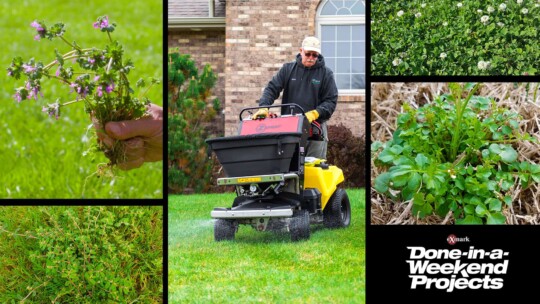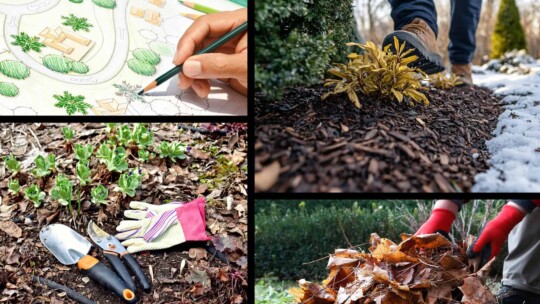When it comes to gardening, there’s a near-endless list of responsibilities even the most seasoned grower overthinks—watering being chief among them. So, how do you identify the early signs of overwatering or underwatering your plants? Follow along in this episode of Backyard Smart to learn how to read the leaves, so you can keep your garden—and backyard life—green and pristine, all season-long.
Signs of Overwatering
If you’re giving your plants a little too much love, you run the risk of flooding the roots, creating a nutrient deficiency that causes a litany of early symptoms.
They start low—only the bottom set of leaves are impacted at first—and gradually work their way up the plant. Prominent yellowing around the midrib (or the vein running down the middle of a leaf) is your first clue. Then, the yellowing spreads, turning the entire bottom set of leaves yellow and splotchy.
After, the leaves develop prominent dark green or purple veins, a sign that chlorosis (the lack of chlorophyll production) has set in. Next, dark brown tips or spots start to develop, as parts of the leaves dry out due to damaged roots not being able to take in oxygen. Likewise, leaves will start to droop, as the waterlogged soil also blocks out air.
If the plant continues to get too much water, that’s when the next round of symptoms kicks in: leaf drop of new and old growth, mushy stems and roots, fungus or mold on the soil, and even the presence of fungus gnats flying around. And, if your soil starts to develop a foul smell, it’s your last chance to act: root rot’s set in.
Signs of Underwatering
To complicate matters, at first glance, many underwatering symptoms look fairly like the signs of overwatering. That’s where a closer look comes into play.
Your first clue is a slight droop to the leaves. Then, the branches follow suit, starting to wilt from the lack of water. After that, the key to identifying an underwatered plant is to look even closer at the leaf edges.
If you still haven’t given your plants the water they need, they’ll start to curl in—similar to a potato chip—and develop a brown edge with a yellow ring around it. If the lack of proper watering continues, the browning and curling will intensify until the whole leaf is dried out—and, eventually, the whole plant.
Testing Your Soil
If you’re still unsure of what’s gone wrong, just look to the ground for some help! Feel an inch or two down into the soil around your plant. If it’s dry, time to break out the hose. If it feels way too moist, hold back on your next few watering sessions. And, if it’s slightly moist but not overly so, you’re on the level.
The “Clump Test” also works: just grab a small handful of soil and squeeze it. If it holds its shape, you’ve watered way too much. If it doesn’t hold a shape, you’ve not watered enough. And if it forms into loose clumps that fall apart fairly easily? You’ve got it just right.
How to Fix an Overwatered Plant
If you’ve been giving your plants a little too much love, hold back on the watering until the soil dries out. Then, if you’re still not seeing any improvement, make sure there’s sufficient drainage to eliminate any pockets of standing water. This can be achieved by introducing organic matter to the soil, as it allows excess water to drain through while retaining only what it needs. And, just like your lawn, aerating your garden beds’ll do the trick, helping your soil breathe and water flow freely.
Building a raised garden bed with great-quality topsoil also works wonders. Adding a thin layer of mulch helps, too. It’s great for absorbing excess moisture—preventing too much water from settling around the roots. Giving you the added benefit of weed control, and additional water retention, to boot!
How to Fix an Underwatered Plant
If you’ve been a little lax in your watering schedule, the solution is simple: water more. (But not too much!) Don’t try to catch up in one watering session; instead, start small and increase the amount and frequency as needed. The key is watering deeply, ensuring that the root zone is sufficiently moist. If the soil is crumbly, loose, and moist after a watering, you’re in the clear.
Now that you know the early signs, the rest is easy: just get outside, give your plants a hand, and read the leaves.



